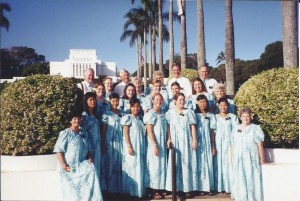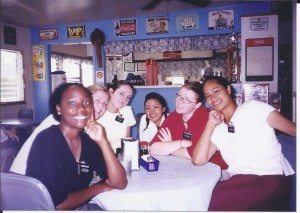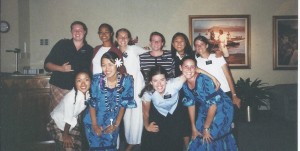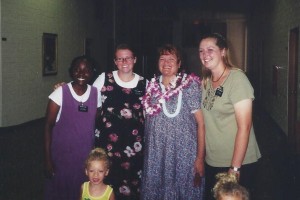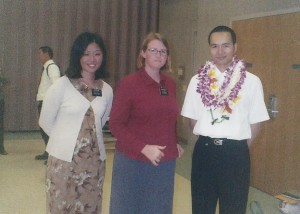Bear in mind as you read that I go back and forth between our health behaviors as parents, and kids’ health practices because I feel they are synonymous. Our children mirror our behaviors and attitudes, and how we treat our children is often a reflection of how to feel about ourselves.

1. Fitness is a conscious choice.
Not really a new idea for adults, but I recently read an article that said we need to stop telling children to exercise because “exercise” is a buzz word that makes it sound like a chore. We need to soften our approach and call it “activity” because it should be a part of our daily…activity. I get the importance of the small steps, and trading out bad habits for good ones. But, does candy-coating exercise really lead to a life of fitness and vitality? And, are “activities” really getting our kids off the couch and away from their screens? Even if they are, are they enough to sustain a lifelong commitment to fitness? We all understand that to be truly fit and to maintain our health takes work – even hard work. It IS a chore, and a choice we have to make with great effort sometimes. So, let’s teach our kids the value of a good workout, which include stress-relief and self-confidence, that they might put down their remotes/phones/keyboards, and start doing something every day that makes them sweat. That is how to be fit, and that is what we should expect from ourselves and our kids. Our bodies are a gift, and it is our stewardship to care for them.
I recently had this conversation with an accomplished pianist – how success in life takes work. He told me that people hear him play and lament how they wish they could just sit down and play beautifully like that. He said, “me too!” This accomplishment didn’t just happen overnight. It took work, practice, time, patience, and consistency. There is value in hard work, and accomplishing difficult tasks. Self-efficacy, physiological balance, and self-confidence are big rewards for finishing a job well done (Annesi, 2010). Check out this link for ideas on how to set goals to achieve fitness.
2. Food is not what makes us fat.
Where do our kids hear that eating will make them fat? Oh, right…EVERYWHERE! Just watch any TV show directed at attracting a teen/tween audience (Lawrie, 2006). The fat kid is always the one eating or thinking about food! This food-to-fat association is what leads to too-restrictive eating even in very young children (Evans, 2013). While is it true that more calories consumed than expended causes weight gain, it is not the only culprit. All of us know someone who can eat whatever they want and never seem to gain weight.
a) The quality of the calorie makes a difference. For example, simple carbohydrates turn into sugar which can turn in to fat if we don’t expend it. Meanwhile, complex carbohydrates are digested slowly, bind with cholesterol, and lend to the health of our digestive tract. One gram of either equals four calories.
b) Imbalances in the body cause weight gain. For example, hyperthyroidism, and other hormone imbalances, sleep deprivation, candida (supposedly), water retention, etc. There are many reasons why our bodies gain weight and retain fat, including stress (especially when we tend to eat more when stressed).
c) Dieting (believe it or not). This is another form of imbalance. When you diet/deprive yourself, your body thinks there is a famine and you are starving yourself. SO when you give up, or try to get back to normal eating habits, you gain all the weight back – plus some more. Your body is shoring up for the next drought. This is where the term “yo-yo dieting” comes from.
d) Heredity. Our genes can sure make our lives more difficult if we are aiming to lose weight. We all know someone who has to work very hard, and watch everything they eat or they will gain weight no matter what. It is our lot in life.
e) Inactivity. Eat perfectly but it will catch up to you if you don’t exercise.

Young children that excessively restrict their diets are likely to have an eating disorder as they grow up (Goodrick, 1999). Kids do not need to hear that eating will make them fat. Their bodies are ever changing and growing. They need plenty of nourishment and a balanced diet to grow well. When we try to dictate everything our kids eat, they stress about pleasing us, or rebel against us. They lose their eating self-efficacy. Junk food (what I like to call “fun food”) is not the enemy when eaten in moderation. Some occasional emotional eating is normal. The problem is that we indulge ourselves without thought, without limit, and usually when we are distracted. Do allow some indulgence within reason, while being cognitively aware of what you are eating. Not only so you can enjoy it, but so you also know when it is time to stop. Change one bad habit and you’ll be better off. Teach children about healthier options, balancing their portions, and moderating their own consumption of fun foods. We need to teach our kids how to make smarter choices without implying they will get fat, and empower them to know the difference between healthful choices, and foods that need to be eaten in moderation. There are other issues that come from eating poorly than just weight gain: fatigue, illness due to malnourishment, dental cavities, indigestion, constipation, hormone imbalance, insatiability and more eating because we are unsatisfied, and crave more, to name a few. Give them these reasons, not, “stop eating that, you’ll get fat!” This will only make children feel self-conscious, feeling preoccupied by their appearance, rather than the healthfulness of their food (more on this later). We should be empowering kids, and ourselves with self-efficacy – meaning the power within ourselves to determine our own behavior (AbuSabha, 1997).
“The core determinants of [effective health practices] include knowledge of health risks and benefits of different health practices, perceived self-efficacy that one can exercise control over one’s health habits, outcome expectations about the expected costs and benefits for different health habits, the health goals people set for themselves and the concrete plans and strategies for realizing them, and the perceived facilitators and social and structural impediments to the changes they seek…Unless people believe they can produce desired effects by their actions, they have little incentive to act or to persevere in the face of difficulties” (Bandura, A., 2004).
Note: the goal is internal health and vitality (fitness), not necessarily weight loss. Sometimes, when weight loss is the primary goal, those “desired effects” do not manifest for a long time, so we give up. Kids might not understand why they need to eat well or exercise, but it needs to be their choice. Lovingly instructing them, and then being patient with them, will empower them to make their own choices which will facilitate “effective health practices.”
But remember…
3. Getting fat is not the worst-case scenario.
In our culture, there is a prevailing lie that fatness equals laziness, no self-discipline, low intelligence, ugliness (Urquhart, 2011). Thinness is just the opposite. Imagine what we put ourselves through when we gain weight, even as a natural process of aging. We subconsciously tell ourselves we are not worthy of love, not even from ourselves. So, we put ourselves through torture to fit into some ideal that, in reality, doesn’t exist. The average BMI is 24 while the ideal is 18 (Urquhart, 2011). This is virtually unattainable without going to unhealthy extremes. Yes, obesity is linked to chronic illness, and leads to lower life satisfaction for many. But is it the worst thing our children could endure? The National Institute of Mental Health has an extensive list of symptoms of eating disorders that sound a lot more severe and immediate than getting a little fat.
I’m not saying we should just let our kids (or ourselves) get fat. But, they do not need the pressure of worrying themselves about whether they will gain or lose anyone’s approval by how they look. “Dietary restraint mediates the relationship between thin-ideal internalization and disordered eating attitudes, even in the absence of body dissatisfaction , due to the wish to attain a socially desirable figure” (Evans, 2013). This pressure may backfire and lead to weight gain in itself. Too-restrictive dieting leads to eating disorders, also in part because we stop being able to listen to our bodies (Johnson, 2005). We stop knowing when we are hungry AND when we are full, which leads to binge eating. “Although disordered eating is usually associated with underweight in popular media, it is more common in overweight individuals. Overweight females report a greater fear of binging, preoccupation with weight, and use of unhealthy weight control behaviors than do non-overweight females (Urquhart, 2011). Diets are destructive. We need to relearn how to listen to our bodies and stop stressing too much about appearance. Health works its way from the inside out.
The food relationship from Ellyn Satter‘s book “Secrets of Feeding a Healthy Family” is, we choose what and when to eat, and children choose if, and how much. The idea is to avoid a power struggle, and possibly to provide options – two kinds of vegetables at dinner so they can choose. Allow kids at least three exposures to food before they can officially rule it out. I love that there is no longer a food guide pyramid. It was harder to understand what portions are realistic. The plate is a better guide. We can easily divide our plates in half, fill one side with fruits and/or vegetables, and the other half with whole grains and lean meats. Wegmans calls it “half-plate healthy“.
I realize that there is a lot (A LOT) about our kids that is out of our control. We cannot make our kids’ choices and we can’t control their environment or how they think. There are some factors that need to be considered and balanced, like our parenting styles, and our kids’ dispositions.
However, we can set a good example for our kids. We start by having a healthy attitude about our own bodies, and about food. We show our kids how to eat a balanced diet and having an active lifestyle by doing it ourselves. We support good behaviors with positive reinforcement. We also teach them by our own words and actions how to value their bodies by not engaging in fat talk (about ourselves or anyone else), but loving our bodies no matter how they look. Our children will echo our words and attitudes for better or for worse. (P.S. that fat talk article is awesome!)
“The marvel of our physical bodies is often overlooked. Who has not encountered feelings of low self-esteem because of physique or appearance? Many people wish their bodies could be more to their liking. Some with naturally straight hair want it curly. Others with curly hair want it straight. Occasionally some ladies, believing that ‘gentlemen prefer blonds,’ become ‘decided blonds.’
“Your body, whatever its natural gifts, is a magnificent creation of God. It is a tabernacle of flesh—a temple for your spirit. A study of your body attests to its divine design…How should these truths influence our personal behavior? We should gratefully acknowledge God as our Creator” (Elder Russel M. Nelson of the Quorum of the Twelve Apostles, We are Children of God, Conference Address, October 1998).
Here’s a great illustration of healthy habits. I love the Berenstain Bears. My only critique of this story is the inherent assumption that junk food = lazy. Otherwise, I love it.
(Images courtesy of kidshealth.org)
Sources:
-AbuSabha R., & Achterberg, C. (1997). Review of self-efficacy and locus of control for nutrition- and health-related behavior. Journal Of The American Dietetic Association, 97(10), 1122-1132.
-Annesi, J., & Gorjala, S. (2010). Relations of self-regulation and self-efficacy for exercise and eating and BMI change: A field investigation. Biopsychosocial Medicine, 410. doi:10.1186/1751-0759-4-10
-Bandura, A. (2004). Health promotion by social cognitive means. Health Education & Behavior: The Official Publication Of The Society For Public Health Education, 31(2), 143-164.
-Evans, E., Tovée, M., Boothroyd, L., & Drewett, R. (2013). Body dissatisfaction and disordered eating attitudes in 7- to 11-year-old girls: Testing a sociocultural model. Body Image, 10(1), 8-15. doi:10.1016/j.bodyim.2012.10.001
-Goodrick, G., Pendleton, V., Kimball, K., Carlos Poston, W., Reeves, R., & Foreyt, J. (1999). Binge eating severity, self-concept, dieting self-efficacy and social support during treatment of binge eating disorder. The International Journal Of Eating Disorders, 26(3), 295-300.
-Johnson, F., & Wardle, J. (2005). Dietary restraint, body dissatisfaction, and psychological distress: a prospective analysis. Journal Of Abnormal Psychology, 114(1), 119-125.
-Lawrie, Z., Sullivan, E., Davies, P., & Hill, R. (2006). Media influence on the body image of children and adolescents. Eating Disorders, 14(5), 355-364.
-Urquhart, C., & Mihalynuk, T. (2011). Disordered eating in women: implications for the obesity pandemic. Canadian Journal Of Dietetic Practice And Research: A Publication Of Dietitians Of Canada = Revue Canadienne De La Pratique Et De La Recherche En Diététique: Une Publication Des Diététistes Du Canada, 72(1), e115-e125.
And so many more…Due to copyrights, I cannot share these articles over mass media, but I do believe I may be able to share them with individuals if you are interested in seeing them in print.

